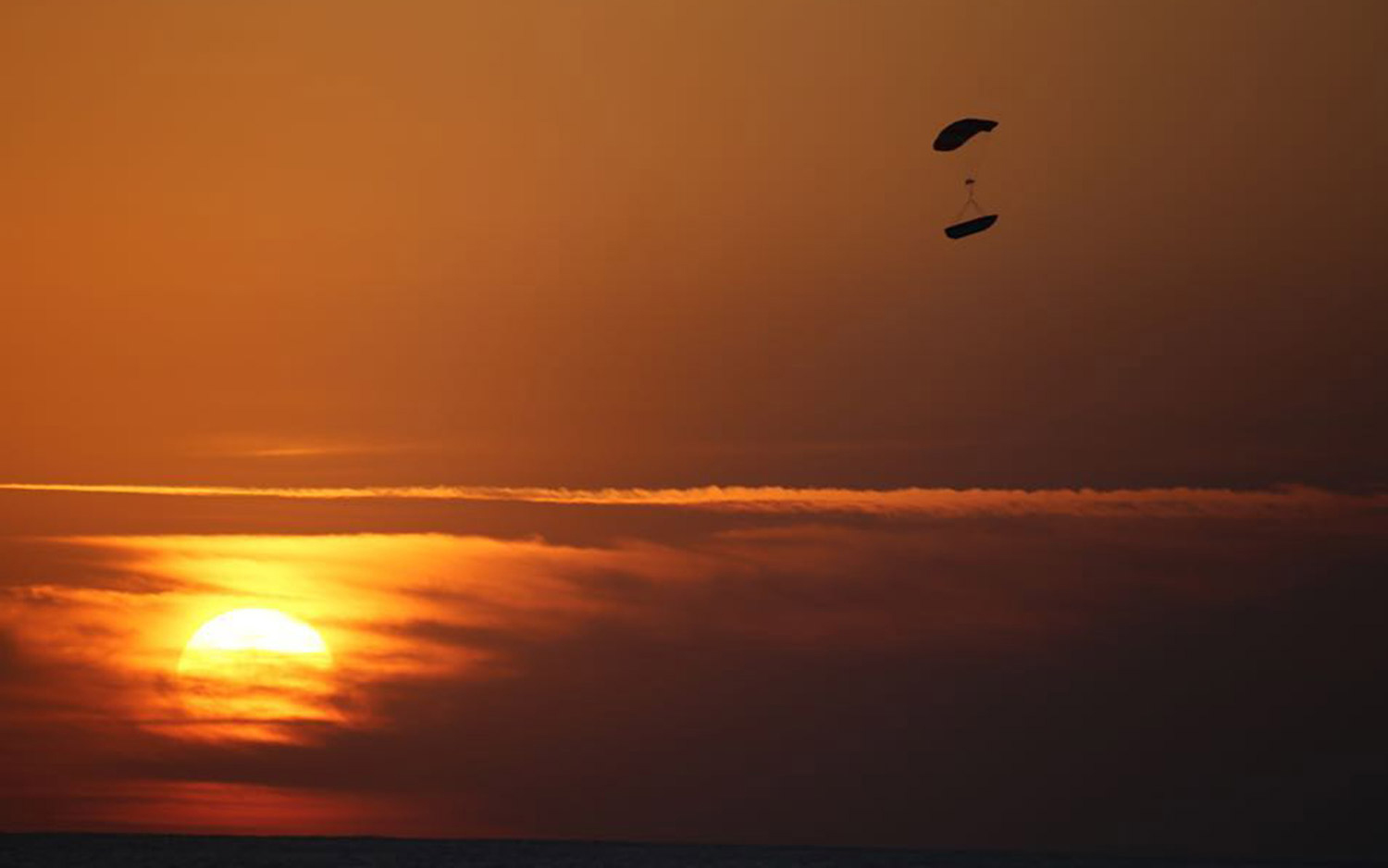See a SpaceX Rocket Fairing Glide Back to Earth in This Awesome Photo

It's a picture of serenity that caps a fiery trip to space.
A new photo unveiled by SpaceX CEO Elon Musk shows half of a Falcon 9 rocket fairing, the protective nose cone that surrounds a payload, as it glides back to Earth under a parafoil. The image, taken after SpaceX's successful launch of NASA's Transiting Exoplanet Survey Satellite (TESS) on April 18, was captured during a test of technology intended to recover (and eventually reuse) payload fairings in the future.
"Falcon 9 fairing opens parafoil after reentering the atmosphere," Musk wrote on Instagram May 2 in a post accompanying the photo.
A SpaceX recovery team retrieved the payload fairing from the Atlantic Ocean but did not attempt to catch it as it fell to Earth with "Mr. Steven," a customized ship equipped with giant metal arms and a net to snag Falcon 9 fairings before they hit the sea. That's because TESS launched from a SpaceX pad at Florida's Cape Canaveral Air Force Station, and SpaceX's Mr. Steven is based on the West Coast, where it has been used to attempt fairing recoveries during launches from Vandenberg Air Force Base in California.
Still, the sight of a SpaceX fairing floating down to Earth under a parafoil is something new. SpaceX has been pursuing fairing recovery as a part of the company's push for a fully reusable rocket.
In the past, Musk has said each SpaceX payload fairing costs $6 million, so reusing those components could help lower the cost of a spaceflight.
SpaceX has reused the first stage of its Falcon 9 rockets, as well as its uncrewed Dragon cargo spacecraft that ferry supplies to the International Space Station for NASA. One of those reused Dragon capsules just returned to Earth for the second time Saturday (May 5).
Breaking space news, the latest updates on rocket launches, skywatching events and more!
Last month, Musk said SpaceX is eyeing plans to use a "giant party balloon" to recover the second stage of its Falcon 9 rocket and then catch it on a "bouncy house." Details on that particular project, however, are slim.
Email Tariq Malik at tmalik@space.com or follow him @tariqjmalik. Follow us @Spacedotcom, Facebook and Google+. Original article on Space.com.

Tariq is the award-winning Editor-in-Chief of Space.com and joined the team in 2001. He covers human spaceflight, as well as skywatching and entertainment. He became Space.com's Editor-in-Chief in 2019. Before joining Space.com, Tariq was a staff reporter for The Los Angeles Times covering education and city beats in La Habra, Fullerton and Huntington Beach. He's a recipient of the 2022 Harry Kolcum Award for excellence in space reporting and the 2025 Space Pioneer Award from the National Space Society. He is an Eagle Scout and Space Camp alum with journalism degrees from the USC and NYU. You can find Tariq at Space.com and as the co-host to the This Week In Space podcast on the TWiT network. To see his latest project, you can follow Tariq on Twitter @tariqjmalik.
